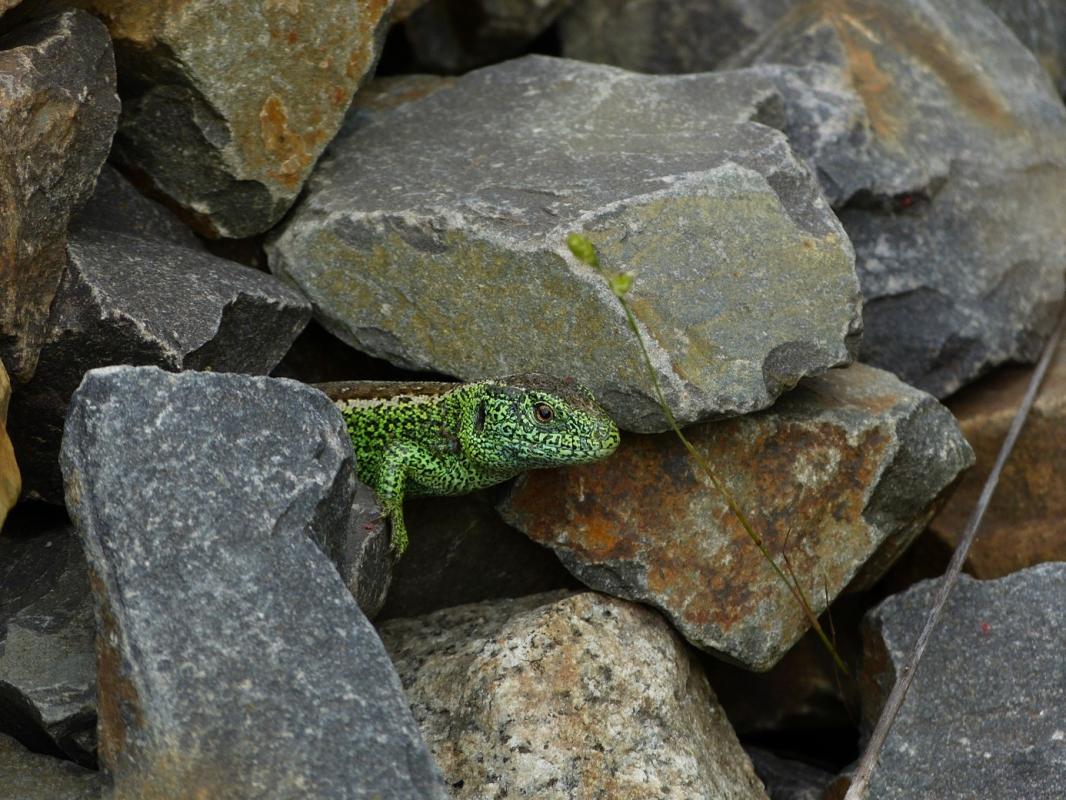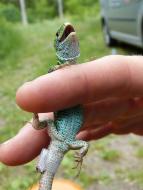As a strictly protected species, sand lizards are dependent on the preservation of their habitats - especially in view of declining populations in Germany. Sand lizards sometimes find ideal living conditions along railway lines - as a new study by the Museum für Naturkunde Berlin shows. Around 80 animals were tagged on a railway line in Brandenburg and observed over several seasons. The results prove this: The animals often only move around in the smallest of spaces, as they find everything they need here - food, basking spots, hiding places and egg-laying sites. The findings are now helping to plan more targeted protection measures for railway projects.
Scientists from the Museum für Naturkunde Berlin aimed to find out exactly how sand lizards, that are usually difficult to observe, use their habitat along railway tracks. To do this, they placed tiny transmitters on nearly 80 sand lizards at a study site along a railway track in eastern Brandenburg, south of Frankfurt (Oder), and monitored the animals in their habitat during various seasons.
‘It was challenging to find a method of tagging sand lizards that would allow the animals to continue moving without restriction,’ says Alina Janssen, a researcher from the Museum für Naturkunde Berlin. ‘For instance, the transmitters should not protrude above the sand lizard, as the animals can quickly become entangled in the dense vegetation through which they would otherwise move across’. Eventually, however, she found a method in which the transmitter can be carefully attached to the tail behind the hind legs and then reveals the lizard's location for up to three weeks before it falls off.
With the data obtained, it was possible to determine and analyse the individual home ranges for every tagged sand lizard. ‘The sand lizard's home ranges were very small compared to studies from other habitats. Some lizards moved just a few meters along the railway embankment during our study,’ reports Mark-Oliver Rödel, reptile expert at the Museum für Naturkunde Berlin. ‘This shows that sand lizards find very good conditions along railway tracks, as they have everything they require throughout the year in a compact area: enough insects to feed on, places to hide and sleep, sunbathing spots and opportunities to lay their eggs. By living in small home ranges, they can save energy and reduce the risk of predation’. During the study, it also became evident how crucial the track ballast is to the thermophile sand lizards. Especially in summer, when the stones of the track ballast warm up considerably during the day, sand lizards prefer to use the ballast as a place to sleep, as the stones keep warm temperatures during the night.
For the sand lizard, whose populations are currently declining throughout Germany, careful management of the remaining populations is particularly important. The precise understanding of the sand lizards movement patterns can now aid in better planning mitigation measures for railway construction projects.
Publication: Janssen, Alina, Staab, Michael & Mark-Oliver Rödel (2025): Home ranges of Sand Lizards, Lacerta agilis (Squamata: Sauria: Lacertidae), along railway tracks. – SALAMANDRA 61(2): 240–255, Link to publication

